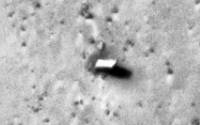Status: Just an idea
License: Custom Licence
Do you have an 100Gbit minimum-phase latency A/D D/A converter with > 100 dB of SNR+D including the computer power to create an anvanced closed loop control for that - if so please contact me ;)
Can very large bandwith + very large dynamic range + digitally controlled be solved other ways ? I believe so - with something similiair to an anlog signal FPGA - but you need to controll and observe that structure as well.
Some examples: First, controlling the heater at home doesn't take either large bandwith nor large dynamic. Second - take a HDD arm instead, it needs to be at the correct posisiton within some ms with a very high position accuricy. Does HDD arm sells in large quantaties? Yes they do!
Lets move to us instead and multiphysics - controlling supercavity based on transducers (instead of using brute force as sending some projectile supersonic under water; thats > 1.5 km /s ) is not trivial - at least not from my perspective. If the cavitation comes too close to the surface it even eats thick titanium plates.
Why bother ?? Well if I put it this way - what about the possibillity to move very large objects almost without friction in water!
Other attepts has been to create cold fusion - that has been a 'cold' research field for many years - but new attepts to solve the fusion riddles is on it's way.
Ultra Low latency, closed loop control together with XMOS
-
lilltroll

- XCore Expert
- Posts: 956
- Joined: Fri Dec 11, 2009 3:53 am
- Location: Sweden, Eskilstuna
Ultra Low latency, closed loop control together with XMOS
Probably not the most confused programmer anymore on the XCORE forum.
-
shawn

- XCore Addict
- Posts: 238
- Joined: Thu Dec 17, 2009 5:15 am
Doctor! You just got to be a mad scientist...
Are these Large objects heavy?
Did you say 100Gbit or is that a lot of latency*
I'm not sure what you ment thats crazy speed.
I have seen some underwater tranducers, they
made a fine mist, gasses and noted, ate stuff.
This is definately a lab project. Its simple and
yet hard for me to get my head around. What
energy cost is needed to eliminate friction?
-
lilltroll

- XCore Expert
- Posts: 956
- Joined: Fri Dec 11, 2009 3:53 am
- Location: Sweden, Eskilstuna
OK, we are in the ultrasound spectra > 20 kHz. A system with a samplig-rate of 100kHz can achieve supercavity, but it cannot control it. To control it we need more than 10 times higher open-loop miminum-phase bandwidth. The converter will introduce some latency - and we will probably need some anti-aliasing since the imploding bubbels creates large bandwidth blasts - generating more latency that needs yo be compensated with higher samlingfreq.
To only observe the closed loop you can use a standard Audio CODEC if you solve the closed loop with an other solution.
I have seen supercavity with less than 2 kW supplied electrical power in a laboratory.
Friction powerloss that correlates to v^2 - meaning you have to travel fast to make it convinient.
To only observe the closed loop you can use a standard Audio CODEC if you solve the closed loop with an other solution.
I have seen supercavity with less than 2 kW supplied electrical power in a laboratory.
Friction powerloss that correlates to v^2 - meaning you have to travel fast to make it convinient.
Probably not the most confused programmer anymore on the XCORE forum.
-
shawn

- XCore Addict
- Posts: 238
- Joined: Thu Dec 17, 2009 5:15 am
Example;
ADC to DAC @ 4 megahertz oversampling frequency rate with dynamic difference A/D conversions.
So with 1bit samples and 192khz aproxamate A/D conversion rates, 96khz @ >100Db Dynamics.
Sigma Delta it in to the event side of say an XK1 is what it would take, so how do you isolate event?
2kWatt W0o! not small, "oh no!"
@ 128 gizmos thats 16 watts each.
Its doable big project, lots of wire.
ADC to DAC @ 4 megahertz oversampling frequency rate with dynamic difference A/D conversions.
So with 1bit samples and 192khz aproxamate A/D conversion rates, 96khz @ >100Db Dynamics.
Sigma Delta it in to the event side of say an XK1 is what it would take, so how do you isolate event?
2kWatt W0o! not small, "oh no!"
@ 128 gizmos thats 16 watts each.
Its doable big project, lots of wire.
